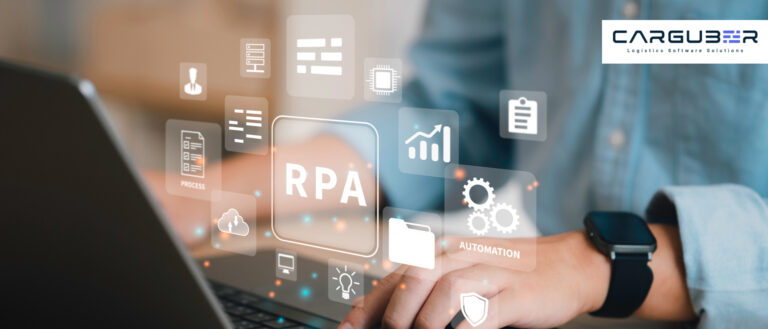Integrating CargoWise and SAP for Warehouse and 3PL Logistics with Carguber
Company Overview
A logistics company operating across multiple countries relies on two robust systems to manage its diverse operations. CargoWise serves as its primary ERP, handling freight forwarding, financial management, customs processes, and supply chain operations. Meanwhile, SAP is utilized for warehouse management, inventory control, and 3PL logistics activities.
To address challenges in smooth data interchange and integration between CargoWise and SAP, the company partnered with Carguber, a tech company specializing in logistics solutions and CargoWise integration. This collaboration aims to simplify workflows, enhance data synchronization, and improve overall operational efficiency.
Challenges in Data Interchange and Integration
Data Format Incompatibility:
CargoWise and SAP may use different data formats and structures, leading to difficulties in transferring data between them. CargoWise may generate data in JSON or XML format, while SAP might use IDocs or BAPIs for its logistics-related processes.
Shipment data generated in CargoWise as a JSON file might need to be converted into SAP’s IDoc format to update warehouse stock.
Carguber, with its expertise in CargoWise and logistics, can provide a customized middleware solution that supports data transformation and mapping between CargoWise and SAP. By leveraging Carguber’s integration tools, they can help create a smooth data flow by converting and synchronizing data between the two systems. They can also implement standard API-based integration for real-time data exchange, ensuring that the systems can effectively communicate with each other using the correct formats.
Real-time Data Synchronization:
Achieving real-time synchronization between CargoWise and SAP can be challenging, leading to delays and discrepancies in inventory and shipment data.
When a shipment in CargoWise triggers an update in SAP’s warehouse system, the synchronization delay could lead to inventory discrepancies or shipment delays.
Carguber can implement a real-time integration platform using API-based communication and event-driven architecture. By customizing the integration, Carguber can ensure that data is updated simultaneously across both systems. For example, once a shipment is created or updated in CargoWise, Carguber can implement real-time triggers to automatically synchronize the inventory and warehouse updates in SAP. They could also use webhooks and message queues to handle the continuous data exchange between CargoWise and SAP, minimizing lag time.
Data Duplication and Inconsistencies:
Without proper integration, data might be entered separately into both systems, causing duplication or inconsistencies.
A customer’s shipping details in CargoWise might not match the records in SAP, leading to issues in billing or inventory management.
Carguber can implement a data reconciliation and synchronization strategy. By establishing a single source of truth for key data elements (such as customer and shipment details) in either CargoWise or SAP, Carguber can create synchronization protocols. This ensures that whenever data is updated in one system, it is automatically propagated to the other. Carguber’s team can configure both systems to communicate directly, preventing manual data entry and reducing the risk of errors. They can also implement automated validation rules to ensure consistency across both platforms.
Complexity in Handling Inventory and Shipment Tracking:
CargoWise and SAP handle different logistics aspects, which can make it challenging to track shipments and inventory across both systems.
A shipment processed in CargoWise might have its inventory tracked separately in SAP, leading to fragmented data and difficulty tracking the status of goods in transit.
Carguber can help create a unified tracking system that integrates both CargoWise and SAP, providing a single view of inventory, shipment status, and stock movements. They can develop custom dashboards that aggregate data from both systems, making it easier for stakeholders to track inventory in real time. Carguber can also integrate CargoWise’s shipment and financial data with SAP’s warehouse management and inventory systems, ensuring that when a shipment progresses in one system, the corresponding inventory or stock status is updated immediately in the other.
Data Security and Compliance Issues:
Data security is critical when transferring sensitive information like customer details, financial records, and shipment data between CargoWise and SAP.
Without secure integration, there’s a risk that data being transferred from CargoWise to SAP might be exposed, violating security or compliance regulations.
Carguber can ensure that data exchange between CargoWise and SAP adheres to industry best practices for security and compliance, such as encryption, role-based access controls, and audit trails. They can implement secure SSL/TLS protocols for data transfer and configure secure authentication mechanisms for API interactions between the systems. Furthermore, Carguber can help your organization comply with GDPR, SOX, or other relevant regulations by ensuring that the integration process maintains proper data privacy and auditability.
Operational and Workflow Process Differences:
Differences in workflows between CargoWise and SAP can create inefficiencies and confusion. For example, an order created in CargoWise may require manual updates in SAP’s warehouse system.
A shipment is processed in CargoWise, but SAP’s warehouse management system requires separate order creation, causing operational bottlenecks.
Carguber can streamline business workflows by creating automated processes that align the operational procedures in both CargoWise and SAP. Using workflow automation, Carguber can eliminate the need for manual intervention when orders are processed in CargoWise. They can implement predefined business rules in both systems to ensure that once a shipment is initiated in CargoWise, the corresponding actions are automatically triggered in SAP (e.g., creating an inbound/outbound order in SAP).
Conclusion
Integrating CargoWise with SAP for smooth data interchange in a warehouse and 3PL logistics presents several challenges, including data format incompatibilities, real-time synchronization issues, data duplication, and workflow differences. However, these challenges can be mitigated using middleware solutions, real-time integration platforms, APIs, and well-defined business process workflows. By ensuring data consistency, security, and real-time updates between CargoWise and SAP, companies can improve operational efficiency, reduce errors, and enhance visibility across their supply chain operations.
Want to link your system with CargoWise SAP integration to simplify your operations? Please contact us right away if you need any assistance!






